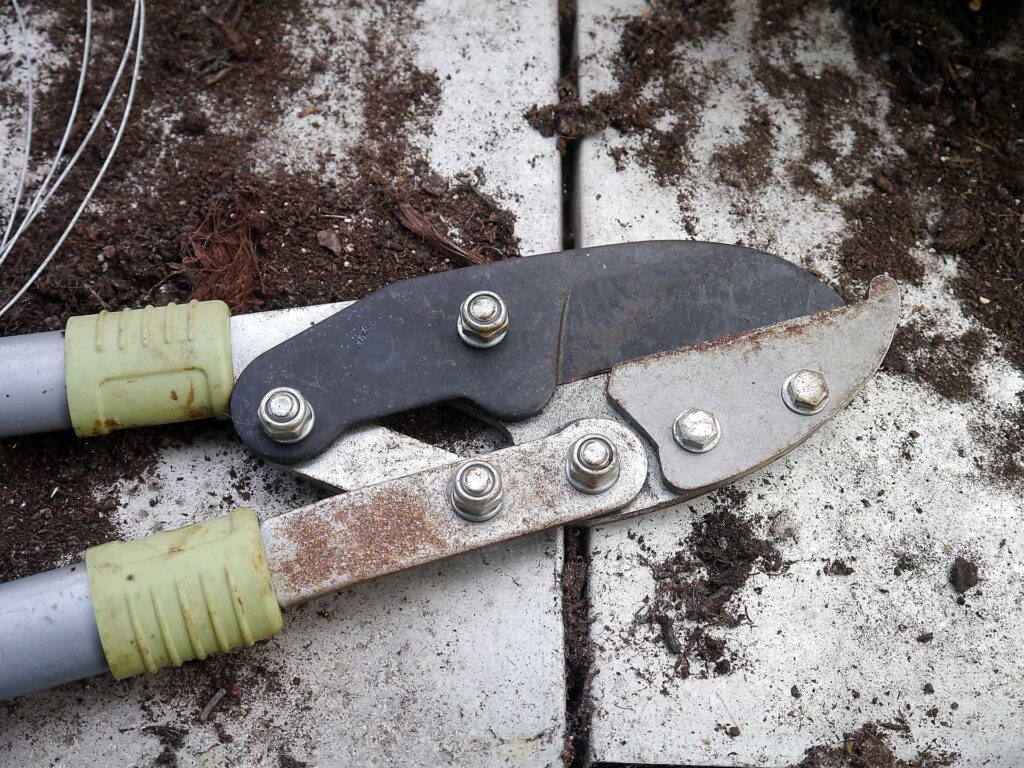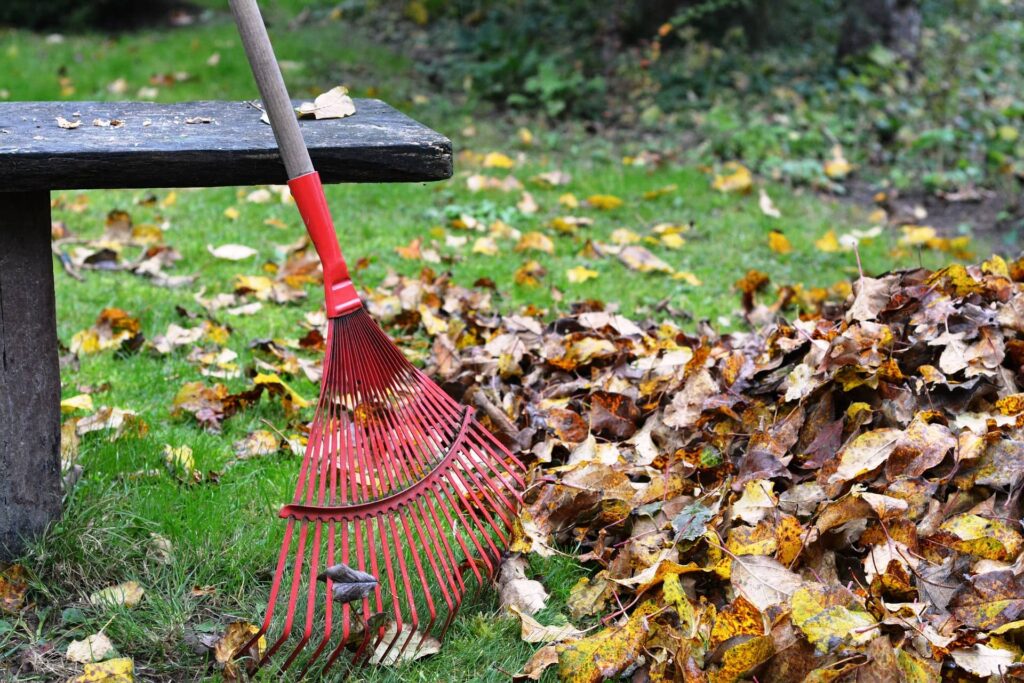In the vast and verdant world of lawn care, speaking the language can make all the difference between cultivating a lush, emerald oasis and grappling with a patchy, weed-infested headache. Whether you’re a DIY enthusiast eager to nurture your own patch of paradise or considering professional lawn care services, understanding lawn care terminology is crucial. This comprehensive guide will walk you through the essential terms and concepts you need to know to become fluent in the language of lawn care, empowering you to make informed decisions and achieve the lawn of your dreams.
Here’s the key takeaways table rewritten in markdown format:
Introduction: Why Lawn Care Terminology Matters
Lawn care is far more than just mowing grass and watering occasionally. It’s a complex science that involves understanding soil health, plant biology, pest control, and environmental factors. By mastering lawn care terminology, you’ll create a more well-maintained lawn and be better equipped to:
- Communicate effectively with lawn care professionals, ensuring your needs are understood and met
- Make informed decisions about lawn care products and services, potentially saving time and money
- Diagnose and address lawn problems more accurately, catching issues before they become severe
- Implement more effective lawn care strategies tailored to your specific grass type and local conditions
- Understand and follow lawn care instructions and recommendations with precision
As we delve into the world of lawn care lingo, remember that each term represents a piece of the puzzle in creating and maintaining a beautiful, healthy lawn. Let’s begin our journey from the ground up, exploring everything from soil composition to advanced care techniques.
Basic Lawn Anatomy: Understanding Your Grass
To truly grasp lawn care terminology, we must start at the roots – quite literally. Let’s break down the anatomy of grass and explore the different types you might encounter in your lawn or neighborhood.
Types of Grass: Cool-Season vs. Warm-Season
Grasses are broadly categorized into two main types based on their growth patterns and climate preferences:
- Cool-season grasses: These grasses thrive in regions with cold winters and mild summers. They grow most vigorously during the spring and fall when temperatures are cooler. Examples include:
- Kentucky Bluegrass: Known for its deep blue-green color and excellent cold tolerance
- Fescue: Including Tall Fescue and Fine Fescue, known for drought resistance and shade tolerance
- Ryegrass: Quick to establish and often used in overseeding
- Bentgrass: Often used on golf courses due to its ability to tolerate very low mowing heights
- Warm-season grasses: These grasses flourish in areas with hot summers and mild winters. They grow most actively during late spring and summer. Examples include:
- Bermudagrass: Known for its high wear tolerance and rapid growth
- Zoysia Grass: Forms a dense, carpet-like turf resistant to weeds
- Bahiagrass: Tolerant of poor soils and drought conditions
- St. Augustine: Shade-tolerant and well-suited for coastal areas
- Centipedegrass: Low-maintenance grass that thrives in acidic soils
- Buffalograss: Native to North America and extremely drought-tolerant
Understanding which type of grass you have is crucial for proper lawn care, as each has different needs in terms of watering, mowing height, fertilization schedules, and overall maintenance.
Parts of a Grass Plant
Knowing the anatomy of a grass plant can help you better understand lawn care instructions and diagnose problems more effectively:
- Crown: The base of the plant where growth occurs. It’s located at soil level and is crucial for the plant’s survival and regeneration.
- Blade: The flat, narrow part of the grass that we see above ground. It’s responsible for photosynthesis and gives the lawn its color.
- Culm: The stem of the grass plant, which supports the blade and any seed heads.
- Rhizome: Underground stems that grow horizontally and produce new plants. Grasses with rhizomes can self-repair and fill in bare spots.
- Stolon: Above-ground stems that spread and root to form new plants. Also known as runners, these help certain grasses spread quickly.
- Root system: The network of fine roots that absorb water and nutrients from the soil.
Growth Habits
Grasses can be categorized by their growth habits, which affect how they spread and fill in your lawn:
- Bunching grasses: These form clumps and spread mainly through tillering (producing new shoots from the base of the plant). Examples include tall fescue and ryegrass.
- Creeping grasses: These spread via rhizomes or stolons, forming a dense turf. Kentucky bluegrass and bermudagrass are examples of creeping grasses.
Understanding your grass’s growth habit can help you choose the right maintenance techniques and address any bare spots in your lawn more effectively.
Soil Science in Lawn Care

The foundation of a healthy lawn is healthy soil. Let’s explore the key terms related to soil science in lawn care, as understanding these concepts is crucial for maintaining optimal growing conditions for your grass.
Soil Composition
Soil is composed of three main particle types, each with distinct characteristics:
- Clay: Small, dense particles less than 0.002 mm in diameter. Clay soils:
- Retain water and nutrients well
- Can become compacted easily
- May drain poorly, leading to waterlogged conditions
- Silt: Medium-sized particles between 0.002 mm and 0.05 mm in diameter. Silt soils:
- Have moderate water and nutrient retention
- Feel smooth when wet
- Can form a crust when dry, potentially impeding water infiltration
- Sand: Large particles between 0.05 mm and 2 mm in diameter. Sandy soils:
- Drain quickly
- Don’t hold nutrients well
- Warm up faster in spring
- Are easy to work with but may dry out quickly
The ideal soil for most lawns is loam, which is a balanced mixture of these three particle types. Loam soil typically contains:
- 40% sand
- 40% silt
- 20% clay
This composition provides good drainage while retaining enough water and nutrients for healthy grass growth.
pH Levels
Soil pH is a measure of how acidic or alkaline your soil is, and it’s crucial for nutrient availability:
- Acidic soil: pH below 7.0
- Neutral soil: pH of 7.0
- Alkaline soil: pH above 7.0
Most grasses prefer a slightly acidic to neutral pH (between 6.0 and 7.0). Knowing your soil’s pH can help you choose the right amendments to optimize growing conditions. For instance:
- If your soil is too acidic, you might add lime to raise the pH
- If it’s too alkaline, you might add sulfur to lower the pH
Soil-Related Terms
- Amendments: Materials added to soil to improve its physical or chemical properties. Examples include:
- Compost: Adds organic matter and improves soil structure
- Lime: Raises soil pH
- Gypsum: Improves soil structure without affecting pH
- Topsoil: The uppermost layer of soil, typically the most fertile. It’s rich in organic matter and microorganisms.
- Fill dirt: Subsoil used to fill holes or level areas. It’s not ideal for plant growth as it lacks the organic matter and microorganisms found in topsoil.
- Friable: Describes soil that crumbles easily, indicating good structure. Friable soil allows for easy root penetration and good water infiltration.
- Cation Exchange Capacity (CEC): A measure of the soil’s ability to hold and release nutrients. Soils with higher CEC (like clay soils) can hold more nutrients.
Compaction and Aeration
Soil compaction occurs when soil particles are pressed together, reducing the space for air and water. This can lead to poor root growth and reduced grass health. Compaction can be remedied through aeration:
- Core aeration: This involves removing small plugs of soil (usually 2-3 inches deep) to reduce compaction. Benefits include:
- Improved air exchange between the soil and atmosphere
- Enhanced water uptake
- Stronger root development
- Reduced water runoff and puddling
- Spike aeration: This method creates holes in the soil without removing plugs. While less effective than core aeration, it can still help with minor compaction issues.
A lawn aerator is a tool designed specifically for this purpose. There are manual and motorized versions available for both homeowners and professionals.
Essential Lawn Care Practices

Now that we understand the basics of grass and soil, let’s explore the key practices in lawn care that will help you maintain a healthy, vibrant lawn.
Mowing
Proper mowing is crucial for a healthy lawn. It encourages grass to grow thicker and develop a deeper root system. Key terms and concepts include:
- Finishing mower: A mower designed for a precise, clean cut. It’s ideal for maintaining a manicured look on well-established lawns.
- Flail mower: A heavy-duty mower for rough areas or tall grass. It uses many small blades (flails) attached to a horizontal drum.
- Mowing height: The height at which you set your mower blades. This varies by grass type and season.
- Scalping: Cutting grass too short, which can damage the crown and lead to a unhealthy lawn.
Remember the “one-third rule”: never remove more than one-third of the grass blade length in a single mowing. This prevents stress on the grass and promotes healthier growth.
Watering
Proper irrigation is essential for lawn health, especially during dry periods. Key concepts include:
- Deep watering: Watering less frequently but for longer periods to encourage deep root growth.
- Evapotranspiration: The process by which water is transferred from the land to the atmosphere by evaporation from the soil and transpiration from plants.
- Irrigation system: This can include sprinklers, drip irrigation, or soaker hoses. Each has its pros and cons depending on your lawn size and shape.
Consider factors like:
- Frequency and duration of watering
- Time of day (early morning is often best to reduce evaporation)
- Type of irrigation system
- Local water restrictions
Fertilizing
Fertilization provides essential nutrients for your lawn, promoting healthy growth and color. Key terms include:
- NPK ratio: The proportion of Nitrogen (N), Phosphorus (P), and Potassium (K) in a fertilizer. For example, a 10-10-10 fertilizer contains 10% of each nutrient.
- Nitrogen (N): Promotes leaf growth and green color
- Phosphorus (P): Encourages root growth and seed development
- Potassium (K): Enhances overall health and disease resistance
- Granular fertilizer: Dry, pellet-like fertilizer that’s easy to spread and typically slower-releasing.
- Liquid fertilizer: Fertilizer in liquid form, often faster-acting but may require more frequent application.
- Organic fertilizer: Made from natural sources like compost, bone meal, or fish emulsion. These tend to release nutrients slowly and improve soil health.
- Inorganic/Synthetic fertilizer: Chemically manufactured fertilizers that often provide nutrients in a more immediately available form.
Application methods include:
- Broadcast spreader: Spreads fertilizer in a wide arc, ideal for larger lawns.
- Drop spreader: Drops fertilizer directly below the spreader, providing more precise application.
- Spray applicator: Used for liquid fertilizers, can attach to a garden hose for easy application.
Aerating and Dethatching
- Aerating: Creating small holes in the soil to improve air, water, and nutrient penetration. This is especially important for compacted soils.
- Dethatching: Removing the layer of dead grass and roots (thatch) that accumulates between the soil and living grass. A little thatch (less than 1/2 inch) is beneficial, but too much can impede water and nutrient penetration.
Overseeding and Top Dressing
- Overseeding: Planting grass seed into existing turf to fill in bare spots or improve density. This is often done in conjunction with aeration for better seed-to-soil contact.
- Top dressing: Applying a thin layer of soil or compost to the lawn surface. This can help level the lawn, improve soil structure, and provide nutrients.
Weed Control and Management
Weeds are a constant challenge in lawn care. Understanding weed types and control methods is crucial for maintaining a healthy, weed-free lawn.
Types of Weeds
- Annual weeds: Complete their lifecycle in one growing season. They can be further categorized into:
- Summer annuals (e.g., crabgrass)
- Winter annuals (e.g., annual bluegrass)
- Perennial weeds: Live for more than two years. These can be particularly challenging to control as they often have extensive root systems.
- Biennial weeds: Complete their lifecycle over two years, typically growing leaves the first year and flowering the second.
Common lawn weeds include:
- Crabgrass: An annual grass weed that spreads quickly
- Dandelions: A perennial broadleaf weed known for its yellow flowers
- Clover: Can be annual or perennial, often considered beneficial by some for its nitrogen-fixing properties
- Thistle: A perennial weed with prickly leaves
Herbicide Types
- Pre-emergent herbicides: Prevent weed seeds from germinating. These are typically applied before weeds appear in spring.
- Post-emergent herbicides: Kill weeds after they’ve sprouted. These can be further categorized into:
- Contact herbicides: Kill only the plant parts they touch
- Systemic herbicides: Are absorbed and moved throughout the plant
- Selective herbicides: Target specific types of plants (e.g., broadleaf weeds) while leaving desirable plants (like grass) unharmed.
- Non-selective herbicides: Kill all plants they contact. These should be used carefully to avoid damaging your lawn.
Integrated Pest Management (IPM)
IPM is an ecosystem-based approach that focuses on long-term prevention of pests through a combination of techniques such as:
- Biological control: Using natural predators or parasites to control pests
- Habitat manipulation: Changing the environment to reduce pest prevalence
- Modification of cultural practices: Adjusting how you care for your lawn to discourage pests
- Use of resistant varieties: Choosing grass types that are naturally resistant to common pests and diseases
This approach aims to minimize the use of chemical pesticides while effectively managing pests.
Pest and Disease Control

A healthy lawn can still be susceptible to various pests and diseases. Here are some key terms and concepts:
Common Pests
- Grubs: Larvae of various beetle species (like Japanese beetles or June bugs) that feed on grass roots. Signs of grub damage include brown patches that can be easily pulled up like a carpet.
- Chinch bugs: Small insects that suck sap from grass blades, causing the grass to dry out and die. They’re particularly problematic in hot, dry conditions.
- Armyworms: Caterpillars that can quickly defoliate large areas of grass.
- Sod webworms: Caterpillars that feed on grass blades at night, causing brown patches.
Fungal Diseases
- Brown patch: Circular areas of dead grass caused by fungal infection. It’s most common in hot, humid weather.
- Dollar spot: Small, circular patches of dead grass, typically about the size of a silver dollar. It’s often a sign of nitrogen deficiency.
- Red thread: Reddish, thread-like growths on grass blades. It’s more common in cool, wet conditions and on nitrogen-deficient lawns.
- Fusarium: A fungal disease that causes yellow or brown patches, often in a circular or crescent shape.
Control Methods
- Insecticides: Chemicals used to control insect pests. These can be broad-spectrum or targeted to specific pests.
- Fungicides: Substances used to control fungal diseases. They can be preventative or curative.
- Biorational approaches: Using natural enemies or environmentally friendly methods to control pests. This might include:
- Beneficial nematodes to control grubs
- Bacillus thuringiensis (Bt) for caterpillar control
- Encouraging beneficial insects like ladybugs or praying mantises
Environmental Factors in Lawn Care
Understanding how environmental factors affect your lawn is crucial for effective care and creating a sustainable landscape.
Climate Considerations
- Hardiness zones: Geographic areas defined by average annual minimum winter temperature. These zones help gardeners determine which plants are most likely to thrive in their location.
- Growing degree days (GDD): A measure of heat accumulation used to predict plant and pest development rates. It’s calculated by taking the average of the daily maximum and minimum temperatures compared to a base temperature (usually 50°F for turf).
- Drought tolerance: A plant’s ability to withstand prolonged periods of dry conditions. Some grass types, like buffalograss and bermudagrass, have higher drought tolerance than others.
- Heat stress: Damage to grass caused by high temperatures. Signs include wilting, discoloration, and slowed growth.
Sun Exposure
Different grass types have different sun requirements. Understanding these can help you choose the right grass for your lawn or adjust your care practices:
- Full sun: Areas that receive 6 or more hours of direct sunlight daily. Grasses like Bermudagrass and Kentucky Bluegrass thrive in full sun.
- Partial shade: Areas that receive 4-6 hours of direct sunlight. Fescues often do well in these conditions.
- Full shade: Areas that receive less than 4 hours of direct sunlight. Very few grasses thrive in full shade, but some, like fine fescues, can tolerate it better than others.
Ecosystem Impact
Consider how your lawn care practices affect the local ecosystem:
- Water usage and runoff: Excessive watering can lead to water waste and runoff, potentially carrying fertilizers and pesticides into local water systems.
- Impact on beneficial insects and pollinators: Some lawn care practices, particularly the use of broad-spectrum pesticides, can harm beneficial insects.
- Contribution to or mitigation of urban heat island effect: Lawns can help cool urban areas, but their benefit depends on how they’re maintained.
Sustainable Practices
- Grasscycling: Leaving grass clippings on the lawn to decompose and return nutrients to the soil. This can reduce the need for additional fertilizer.
- Green roofs: Installing vegetation on rooftops to improve insulation, reduce runoff, and create habitat for wildlife.
- Xeriscaping: Landscaping designed to reduce or eliminate the need for irrigation. This often involves using native, drought-tolerant plants.
- Rain gardens: Planted depressions designed to absorb rainwater runoff from impervious urban areas like roofs, driveways, and walkways.
Advanced Lawn Care Concepts
For those looking to take their lawn care to the next level, here are some advanced concepts:
Thatch Management
Thatch is a layer of dead and living grass stems, roots, and debris that accumulates between the soil surface and the green grass blades. While a thin layer (less than 1/2 inch) can be beneficial, excessive thatch can lead to problems:
- Reduced water penetration
- Increased susceptibility to pests and diseases
- Reduced effectiveness of fertilizers and pesticides
Thatch can be managed through:
- Regular core aeration
- Use of vertical mowers or power rakes
- Encouraging beneficial microorganisms that break down thatch
Soil Biology
Understanding the role of microorganisms in soil health is crucial for advanced lawn care:
- Beneficial bacteria: Help decompose organic matter and cycle nutrients
- Mycorrhizal fungi: Form symbiotic relationships with plant roots, enhancing nutrient uptake
- Protozoa and nematodes: Help cycle nutrients and control harmful organisms
Anaerobic conditions (lack of oxygen) in soil can lead to poor root growth and increased disease susceptibility. This is often a result of compaction or overwatering.
Specialized Techniques
- Hydroseeding/hydromulching: A planting process that uses a slurry of seed, mulch, fertilizer, and sometimes tackifying agents. It’s often used for quickly establishing grass on large areas or slopes.
- Transplanting: Moving established plants from one location to another. This can be used to fill in bare spots or redesign your lawn layout.
- Soil testing: Analyzing soil samples to determine nutrient levels, pH, and other characteristics. This can guide more precise fertilization and amendment practices.
Professional Disciplines
- Agrostology: The scientific study of grasses. Agrostologists study grass anatomy, physiology, ecology, and taxonomy.
- Arboriculture: The cultivation and management of trees and shrubs. This is typically performed by arborists, professionals trained in tree care.
- Turfgrass science: A specialized field focusing on the development, maintenance, and use of grassed areas for sports, leisure, and environmental enhancement.
Lawn Care Equipment and Tools

Having the right tools is essential for effective lawn care. Here’s a rundown of common equipment:
- Mowers:
- Push mowers: Manual or self-propelled
- Riding mowers: For larger lawns
- Zero-turn mowers: Offer greater maneuverability
- Reel mowers: Provide a very precise cut, often used on golf courses
- Spreaders: For even distribution of fertilizers and seeds
- Broadcast spreaders: Spread material in a wide arc
- Drop spreaders: Provide more precise application
- Edgers and trimmers: For neat lawn edges and hard-to-reach areas
- String trimmers: Use a flexible monofilament line to cut grass
- Blade edgers: Use a metal blade for a cleaner edge
- Leaf blowers: For cleanup of leaves and grass clippings
- Handheld blowers: Suitable for small to medium yards
- Backpack blowers: More powerful, good for larger areas
- Specialized tools:
- Dethatchers: Remove thatch buildup
- Power rakes: Similar to dethatchers but more aggressive
- Sprayers: For applying liquid treatments (fertilizers, herbicides, etc.)
Conclusion: Empowering Your Lawn Care Journey
Understanding lawn care basics and terminology is the first step toward achieving the lawn of your dreams. By mastering these terms and concepts, you’ll be better equipped to care for your lawn, communicate with professionals, and make informed decisions about products and services.
Getting comfortable with lawn care terminology is very important to creating a beautiful lawn. But it is also one of the common lawn care myths that you need to memorize everything. Just like anything else, look up what you don’t know and soon you will commit these new concepts to memory.
Remember, every lawn is unique and influenced by factors like local climate, soil type, grass species, and usage patterns. Use this knowledge as a foundation, but don’t be afraid to experiment and learn from your experiences. Observe your lawn closely, keep records of your care practices and their results, and be patient – creating a beautiful, healthy lawn is a long-term process.
As you continue your lawn care journey, consider the environmental impact of your practices. Look for ways to reduce water usage, minimize chemical inputs, and create a lawn that not only looks good but also supports local ecosystems.
Finally, don’t hesitate to seek advice from local experts or join community gardening groups. Sharing experiences and knowledge with others can greatly enhance your lawn care skills and enjoyment.
Happy lawn care, and may your grass always be greener!


